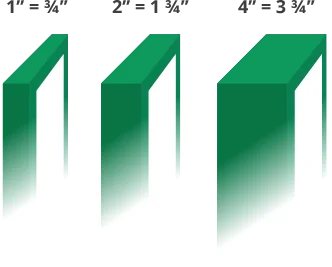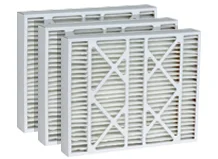Hiring top-notch attic insulation services helps transform your home into an energy-efficient haven. Impressive insulation swoops in like a superhero, reducing heat loss during winter and repelling heat gain throughout summer. This makes your HVAC system work effortlessly, significantly lowering your energy bills. Did you know good insulation also hikes up your property value? Potential buyers always look for homes that promise comfort and efficiency.
Key Takeaways
■ Expert guidance on selecting insulation materials that are most effective for homes is available from the best attic insulation installation services.
■ A key advantage of these services is professional installation, which maximizes insulation performance and promotes energy efficiency in your home.
■ These services specialize in specific insulation techniques, ensuring comprehensive coverage even in hard-to-reach areas, leaving no corner uninsulated.
■ Utilizing high-quality insulation amplifies the home market value and improves living conditions.
■ These top-notch services promote sustainability through the use of durable, recyclable materials, thereby reducing energy consumption at home and decreasing greenhouse gas emissions.
Understanding Attic Insulation Basics
Attics play an integral role in a home's thermal performance. These spaces offer extra storage, but their importance lies in their insulation, which impacts their thermal characteristics.
Insulation materials, forming a heat transfer barrier, assist in maintaining a stable interior temperature. Such materials range from fiberglass to cellulose, and even foam, with each offering distinct benefits. Lightweight and fire-resistant, fiberglass stands out, while cellulose stands for its eco-friendliness. Foam, however, excels in insulation capacity.
Installation techniques differ depending on the chosen material and attic structure. Attic joists may include blanket insulation, with loose-fill or blown-in insulation utilized for corners and difficult-to-reach spaces. Foam insulation necessitates a more specialized approach.
Knowing these attic insulation principles guides homeowners in making better decisions about energy efficiency. A well-insulated attic goes beyond comfort—it contributes to more sustainable living.
Energy Efficiency and Cost Savings
Investing in top-notch attic insulation not only shores your home against the elements but also offers a solid return through energy savings and reduced operational costs. During the colder months, quality insulation traps heat inside, easing the burden on your heating system and slashing your energy bills.
In the warmer seasons, this same insulation is a barrier against heat invasion, allowing your cooling system to maintain comfortable temperatures more efficiently. This not only cuts down on energy consumption but also extends the life of your HVAC equipment.
The upshot? The money you put into insulation today pays off in ongoing utility savings—making it a savvy long-term investment for eco-conscious homeowners looking to minimize their environmental footprint while maximizing home comfort.
Boosting Your Home's Market Value
High-quality attic insulation offers distinct advantages, including escalation in your home's market value. Undertaking home improvement projects such as insulation upgrades not only betters your living conditions but also elevates your property investment portfolio's value.
Modern property market values energy efficiency greatly. Informed buyers know the merits of well-insulated homes, showing readiness to pay extra for such features. Enhanced attic insulation results in minimized energy expenses, less noise pollution, plus a more comfortable, regulated indoor environment. Attributes like these make your property more tempting to potential purchasers.
Procuring services from superior attic insulation professionals ensures exceptional quality work, contributing to your home's value. These specialists advise on the right insulation for your attic, considering aspects like local weather conditions and unique home construction.

Attic Insulation and Sustainability
Attic insulation attracts a growing number of homeowners due to its energy efficiency and sustainability benefits. Insulating attics significantly decreases properties' environmental impact.
Several materials used for insulation nowadays originate from recycled or renewable sources. Cellulose mainly comprises recycled newsprint. Sheep's wool is also something to consider for your home.
Materials that last longer and are recyclable have less adverse environmental impact.
Choosing the Right Insulation Service
Choosing the best insulation service is like tailoring your home for ultimate comfort—it has to fit just right to make a true difference. With a range of options available, from spray foam to blown-in cellulose and fiberglass batts, each has its advantages. The key is finding the solution that best matches your home's needs, budget, and insulation goals. Whether you're after maximum energy savings, sustainability, or simple installation, the right professional service ensures your home gets the perfect insulation for peak performance.
Start your search by seeking a company offering multiple options. Also, consider one with a team of experts to guide you. Moreover, try to research and confirm their track record of professional installations. Remember, improper installation leads to even the best insulation underperforming.
Frequently Asked Questions
What's the best attic insulation?
Spray foam insulation usually takes the top spot for its high R-value and ability to seal those tricky little gaps where air can escape.
Is blown-in insulation better thanrolls?
Blown-in insulation outperforms rolls because it can reach into tighter spaces, giving your attic more complete coverage.
What R-value should my attic have?
The ideal R-value for your attic insulation depends on where you live. However, as a general guideline, a range of R-30 to R-60 is recommended for optimal insulation, providing a comfortable and energy-efficient home environment.
Is it worth adding extra attic insulation?
Absolutely! Extra insulation helps reduce energy bills by keeping your home warmer in winter and cooler in summer.
How thick should attic insulation be?
Insulation thickness depends on the type, but a good rule of thumb is around 10 to 14 inches for most homes.
What's the best insulation for older homes?
Blown-in cellulose is often the preferred material for older homes since it can be installed without removing existing structures.
What's the downside of blown-in insulation?
Over time, blown-in insulation can settle, which may reduce its R-value and overall effectiveness.
Can you overdo blown-in insulation?
Yes, it's possible to overdo blown-in insulation. Adding too much can lead to moisture issues and even roof damage, so it's important to maintain a balance.
Which is better: blown-in or foam insulation?
Both have their perks, but spray foam typically offers a higher R-value and is more effective at sealing air leaks.
Faced or unfaced insulation for the attic?
In most cases, unfaced insulation is the way to go, especially if your attic already has a vapor barrier in place. This type of insulation is effective and can provide the insulation you need.
Which insulation has the highest R-value?
Closed-cell spray foam insulation tops the charts with R-6 to R-7 per inch R-value.
Should I remove the old insulation before adding the new one?
Yes, it's highly recommended to remove the old insulation before adding the new one. This ensures that the new material can perform at its best without being hampered by damaged or ineffective insulation, maximizing its effectiveness.

.webp)
.webp)
.webp)
.webp)








